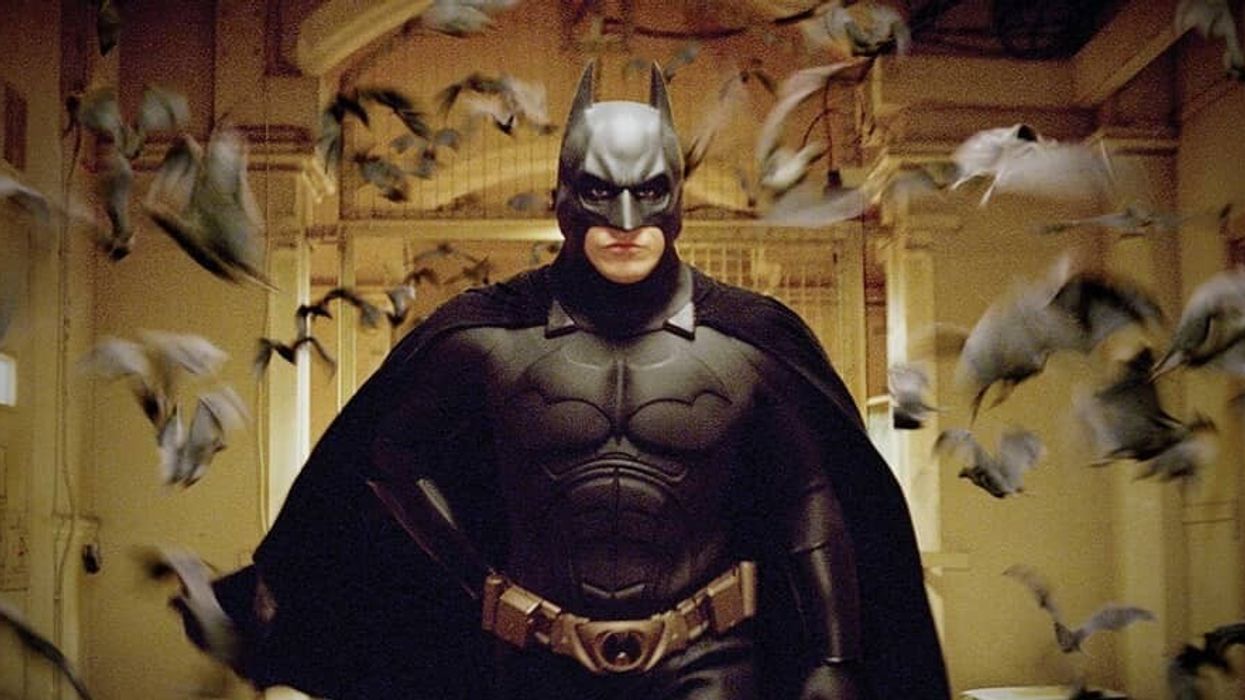Did You Know 'Batman Begins' Saved James Bond?
After years of absurdity, Batman Begins gave the James Bond franchise something gritty to chew on.

Some film franchises find themselves at a point of no return due to the lack of realism, playing into the audience’s expectations, or trying to outdo a predecessor in wackier and unhinged ways that don’t serve the story. Some franchises need to return to their origins.
In the early to mid-2000s, two reboots, Batman Begins and Casino Royale, created a tonal shift in their respective franchises that would completely change how their characters would exist in pop culture. Instead of being the outlandish films that were expected, these two films took themselves seriously by establishing a grittier tone that would come to define these characters as men with a dark side.
The gritty reboot is something we have seen before and come to expect in films to restart a franchise. The audiences want something darker that felt like it was made for adults and not children. Martin Campbell and Christopher Nolan delivered just that.
CineFix breaks down how Batman Begins became the first gritty reboot that other franchises like James Bond would adapt to survive. Check out CineFix's video below.
Going darker
Batman Begins was able to find its new roots thanks to the rise in popularity to the darker storylines that DC comics started telling. Frank Miller’s Batman: The Dark Knight Returns and Batman: Year One showcased a grittier telling of Batman’s origins and created a more enduring, complex character that reflected the complexities of humanity.
Although the comics reimagined the Dark Knight, the films had not caught onto the success of the new, gritty superhero. Instead, a campy imagining of the superhero and the world he protects was brought to the screen. Lorenzo di Bonaventura, who was President of Worldwide Productions at Warner Bros. from 1998-2002, realized that the campy, unrealistic superhero had run its course, and it was time to find a new approach.
Similar to the Batman franchise, Bond had become unpopular with the general public. Die Another Day proved to be the end of a particularly outrageous era for James Bond. With poorly animated surfing sequences, invisible cars, and ice palaces, audiences had had enough with the silly games that had interwoven themselves into the international spy’s stories.
With both of these major franchises struggling both critically and commercially, the studios were open to anything that would pull James Bond and Batman out of the sinking ship. Thanks to the appreciation for darker storytelling that could be found in comics and the public's already established enjoyment of these stories, studios hired writers who wanted to ground the world in which these two characters would live.
David S. Goyer and Christopher Nolan had already established that their film would be grounded and that it would be serious like the Dennis O'Neil and Neal Adams’s Batman mixed with Frank Miller’s Batman. Batman Begins was a hard reboot, showing what it would take to make a man dress like a bat and go full vigilante. The explanation for how Bruce (Christian Bale) gets his suit, Batmobile, and combat training was tied to his privilege. Introducing Rachel Dawes (Katie Holmes) was unlike any other Batman film as well, as she became a piece of Batman’s origins, and became a love interest that had weight to the choices that Bruce made as Batman. Batman Begins became a success, creating a new legacy for the franchise to follow.

When it came to James Bond, everyone knew that it was time to return Bond back to his tougher roots that were found in Ian Fleming’s spy novels. The franchise was missing a proper origin story for its protagonist, and Casino Royale was able to deliver one that felt perfectly savvy and as deadly as Craig’s Bond could and would be.
Adapting to trends
One thing that the Bond films had always done well adjusted to the major trends in film.
The most obvious example of this is at the end of The Spy Who Loved Me, the credits announced that the next Bond film would be For Your Eyes Only, but then Star Wars was released, finding major success in the box office. Hoping to build off of the momentum generated by Star Wars, Moonraker was released instead, which saw Bond in space. When Batman Begins was released in 2005 and had an overall positive reception, the Bond franchise knew that they would have to follow that same gritty tone to find success with the audience. Paul Haggis, one of the writers on Casino Royale, even told Canadian Radio, “We’re trying to do for Bond what Batman Begins did for Batman.”
Casino Royale was a true adaptation of Ian Fleming's novel of the same name and followed a similar pattern that Batman Begins established: a love interest with a real impact on the main character, and an investigation into Bond’s motivations and emotions. Bond had found a new way to exist in the modern era by leaving all of the comical villains and outlandish gadgets in his Aston Martin in the past.

Like any trend, the gritty reboot started its slow decline once everyone in Hollywood saw its potential. Any film franchise that wanted to reboot tried to follow the model that David S. Goyer and Christopher Nolan created. Suddenly everyone had a darker color palette and the determination to explore more dramatic themes. Some of these films did succeed, but the ones that didn’t felt shallow, acting as a cash grab more than anything else.
When deciding on the tone of your film, you must keep in mind what the tone of the world is. Films that do very well in tone do so because it reflects an overall mood of a society. Creating a project that reflects the times can date the film, but it will also encapsulate what it meant to live at a certain time. For now, the gritty reboot has run its course, but give it a few years when we are all craving something nihilistic.
What are your favorite gritty reboots after Batman Begins and Casino Royale?
Source: CineFix












